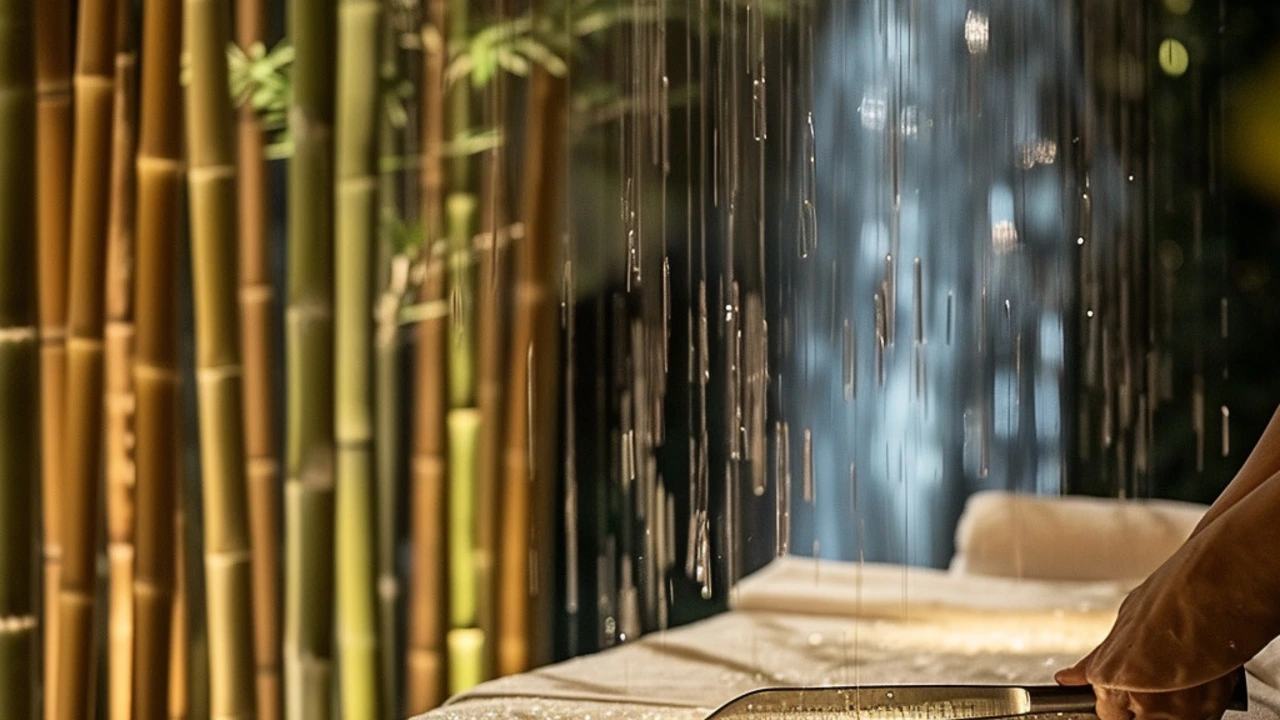-
20

Exploring the Healing Edge: The Benefits of Knife Massage Therapy
Rediscovering the Ancient Practice
The practice of knife massage, known as dao liao, is not as daunting as it may sound. Originally from China and popular in Taiwan, this ancient technique uses blunt-edged knives as a tool to rejuvenate the body and mind. Far from the sharp elements we associate with cutting, these tools are used in gentle, rhythmic movements along the body's meridians or energy lines. The art of knife massage dates back over 2,000 years and was traditionally reserved for royalty and the elite. The idea is that metal interacts with the body's electromagnetic field, potentially helping to realign energy pathways and providing a unique sense of deep relaxation, rejuvenation, and healing.
The Technique Unveiled
Imagine laying down, eyes closed, and hearing the soft tap-tap-tap of metal against your back - it's the sound of a knife massage session in progress. Therapists trained in this technique use specially designed knives that are meant solely for this purpose. These tools, often consecrated and treated with care, become extensions of the healer's hands. The massage usually starts with a warm-up of the body's tissues using hands or other traditional massage tools. Following this, the knives come into play, gliding over fabric or clothes - always ensuring no skin contact. The practitioner taps and strokes, carefully paying attention to the body's response, and can tailor the intensity and focus of the movements to the individual's needs.
Perceived Benefits of Knife Therapy
Those brave enough to try knife massage are believed to reap numerous benefits. By working along energy lines similar to those in acupuncture or shiatsu, practitioners aim to improve the flow of qi, or life force, in the body. Benefits reported by enthusiasts include deep relaxation, improved circulation, reduced muscle tension, and a better sense of balance and well-being. Some even believe that these massages can assist in the detoxification process, help in reducing cellulite, and promote faster recovery from fatigue. While clinical research on knife massage is limited, anecdotal evidence supports its effectiveness for many, making it an enticing option for holistic explorers.
Considerations and Choosing a Therapist
Safety is a natural concern when it comes to any therapeutic practice, especially one involving instruments like knives. It's critical to ensure the knives are specially designed for this type of massage; they should be well-maintained and used with the utmost respect and skill. When looking for a knife massage therapist, one should look for certified practitioners who have undergone extensive training and can share clear explanations of the process and expected outcomes. Personal comfort with the therapist is paramount, as trust plays a vital role in the ability to relax and benefit from the session.
Incorporating Knife Massage Into Your Wellness Routine
For those drawn to alternative therapies, knife massage can be a fascinating addition to a holistic wellness routine. It's often recommended to start with a shorter session to assess comfort and response before committing to longer treatments. Integrate the therapy into your schedule as one of many tools in your self-care arsenal. Balance is key in wellness - mixing traditional and modern methods can create a well-rounded approach that caters uniquely to your body's needs. Always follow up treatments with plenty of water, rest, and listen to your body's reactions in the subsequent days to truly gauge the benefits of this unconventional yet profound therapy.
 Health & Wellness
Health & Wellness
Write a comment